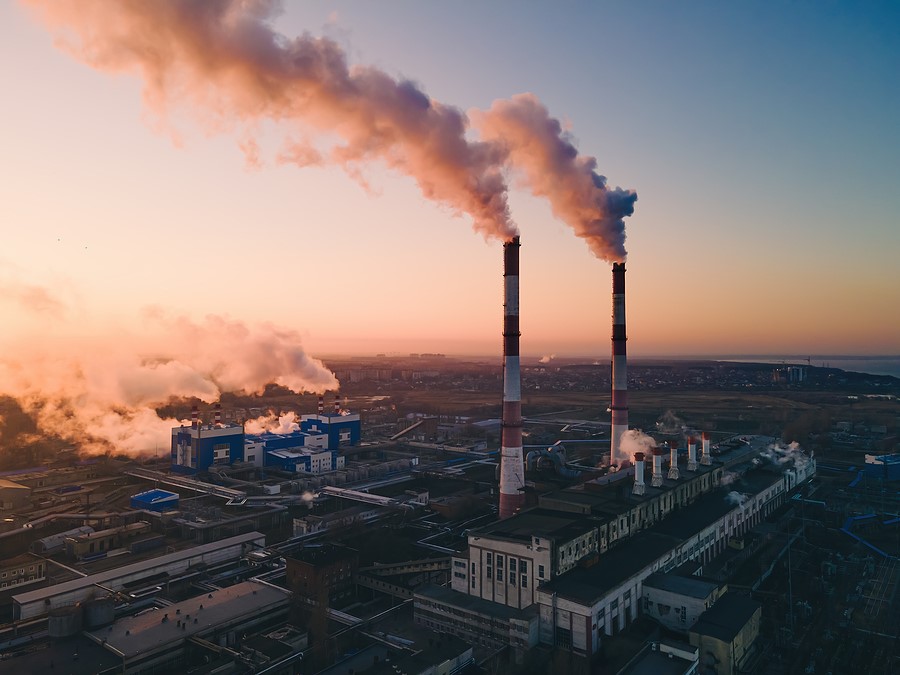News
The Biggest Industrial Threats To Global Freshwater Systems
Earlier this year, the Intergovernmental Panel on Climate Change published its sixth report, assessing the impacts of climate change across human communities, biodiversity and ecosystems – and it makes for very stark reading indeed.
As evidenced in the report, man-made climate change is resulting in dangerous and widespread disruption to the environment, which is affecting billions of people all over the world, despite the steps that have been taken to reduce the risks.
In order to mitigate these risks, it is essential to achieve the goal of limiting global warming levels to a 1.5 degree C rise – and, in order to see this become a reality, global emissions will need to be slashed by 45 per cent come 2030, with net zero emissions achieved by 2050.
UN secretary-general Antonio Guterres commented on the findings, saying: “But according to current commitments, global emissions are set to increase almost 14 per cent over the current decade. That spells catastrophe. It will destroy any chance of keeping 1.5 alive.”
One of the biggest issues associated with the climate emergency (although also one of the least talked about) is the impact it is having on the global water cycle and freshwater supplies around the world, further exacerbating the existing water crisis, with demand expected to outstrip supply by 40 per cent come 2030.
There are many contributing factors to water stress and scarcity, and different regions around the world face their own specific set of problems where water is concerned – which means that there is no one size fits all solution that can be applied.
However, what is clear is that industry practices around the world are having a big impact on freshwater supplies, so operational changes are now a must in order to safeguard resources for future generations… and this is an area where businesses of all kinds and in all parts of the world could potentially collaborate on, all working towards a common goal.
A new report from sustainability non-profit organisation Ceres has revealed that there are 12 key industries across seven sectors that represent the biggest contributors to critical threats to global freshwater systems, such as groundwater depletion, plastic pollution, metal contamination, eutrophication (which leads to excessive plant and algae growth), and water diversion and transfer.
Of course, it may come as no surprise that textiles and apparel, and food products are two of the 12 industries emerging as some of the worst offenders where water sustainability is concerned. Other inclusions may seem a little more unusual, such as the pharmaceutical and semiconductor industries.
The seven key sectors identified were food production, healthcare, consumer goods, energy generation, technology, utilities and materials, all of which are contributing significantly to water shortages and pollution.
The report analysis goes on to show that the threats are not only severe on a local scale but are, in fact, widespread, posing wider systemic risks to the global economy, with companies exposing themselves and their investors to serious financial risks through their own corporate practices.
For example, a research note from Barclays (cited in the report) indicated that the global consumer goods sector by itself (including food and beverage production) is now facing a potential $200 billion impact from the risks associated with water scarcity… approximately three times higher than the carbon-related risks.
Industry as a whole is the single biggest user and influencer of freshwater resources around the world, so it has a lot to lose from water-related risks – which are increasing in line with climate change, population growth, urbanisation, water mismanagement, ageing infrastructure and more frequent extreme weather events.
Senior programme director of water at Ceres Kirsten James said: “Many of the world’s largest institutional investors have yet to consider the private sector’s impact on freshwater when making investment and engagement decisions.
“The Global Assessment of Private Sector Impacts on Water makes the extent of those impacts clear for investors and outlines which industries are causing the most harm – and have the most to lose – if improvements aren’t made.
“Investors have a critical role to play in spurring greater corporate engagement on water stewardship, and we hope this assessment is a useful tool to help them strategically focus their efforts.”
So what can industry do to rectify the situation, address the water crisis and shore up their own operations to ensure resilience in the future?
The assessment identifies seven core actions that will help investors focus engagements with the private sector more strategically, as well as what should be expected from organisations in terms of innovation and adaptation to global water threats.
These seven core actions are:
- Water quantity: making sure water availability isn’t affected by operational practices
- Water quality: preventing pollution of local and regional waterways by corporate activities
- Ecosystem protection: not degrading natural ecosystems and restoring those that the business depends on
- Sanitation & accessibility: Collaborating to support community access to clean water and sanitation in areas of operation and where business activity has an impact
- Business integration: Incorporating risks and opportunities into corporate governance and decision-making across all levels of the business, and disclosing water usage across the supply chain
- Public policy engagement & water governance: Supporting policies and water governance structures that drive sustainable management of water resources
- Multi-stakeholder collaboration: Invest in cross-industry efforts to challenge traditional business practices, encouraging research and system-level changes
If, as a business, you’re becoming increasingly concerned about your own water footprint and the impact that your operations are having, it’s important to gain an initial understanding of how and where you’re using resources – as this will then mean you’re able to bring in water-saving solutions where appropriate.
A water audit is a great first step to take, so get in touch with us here at H2o Building Services if you’d like to discover what your brand’s water usage habits actually are.
